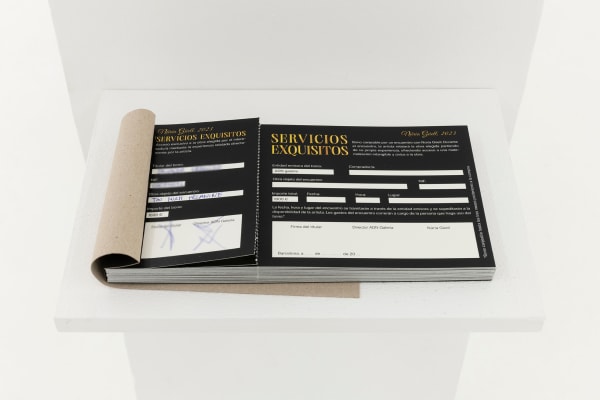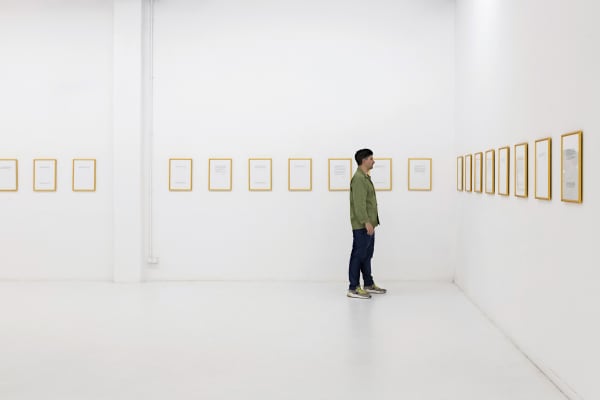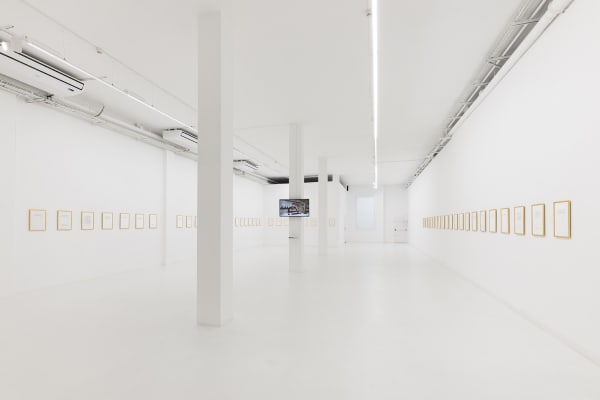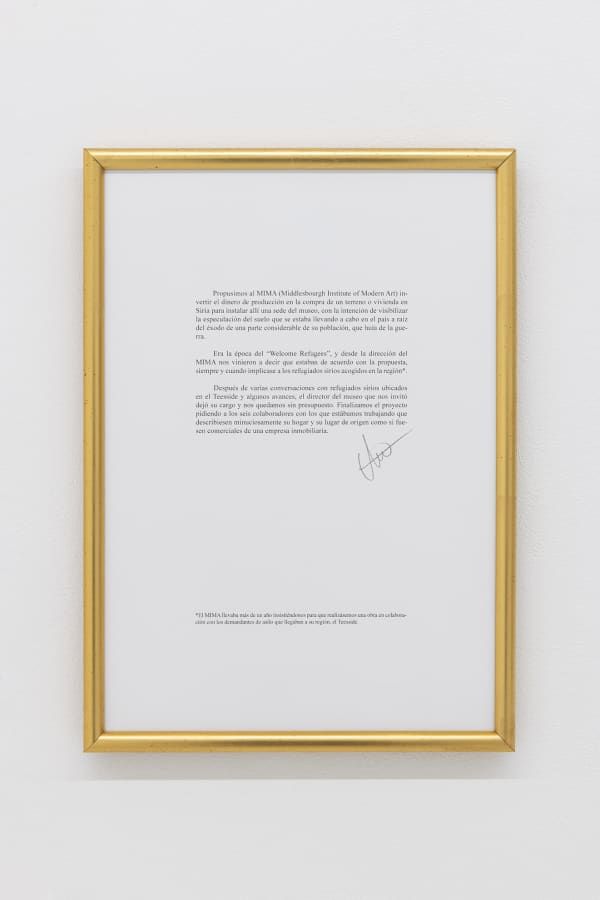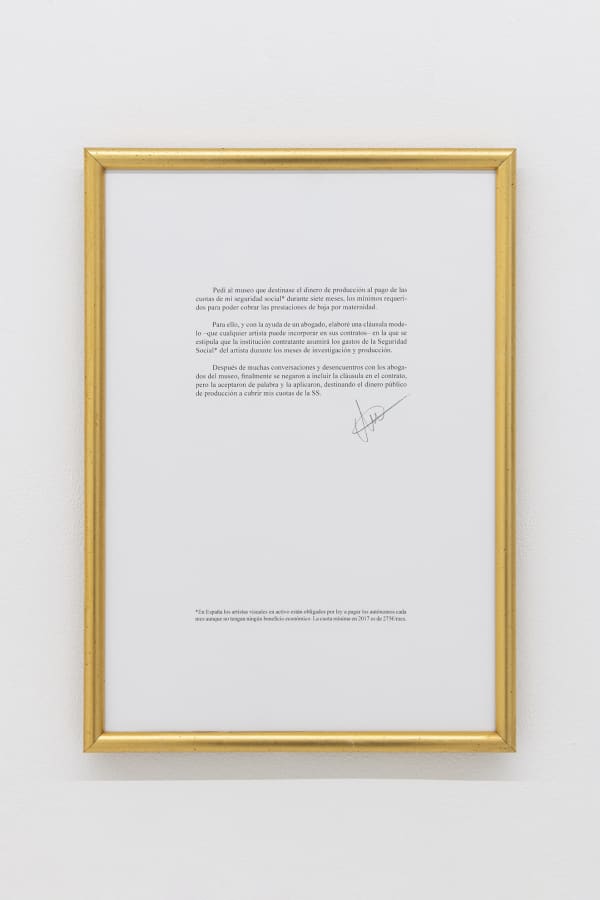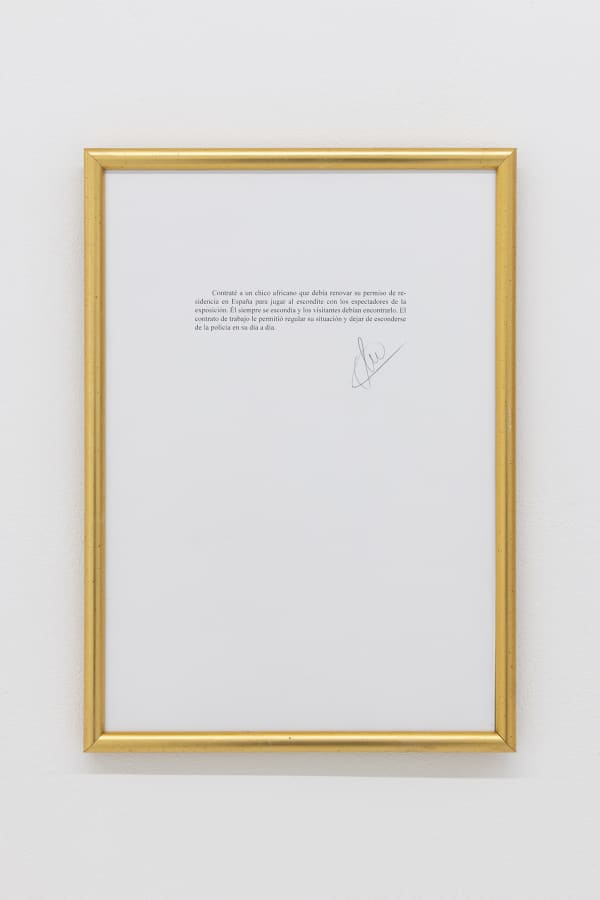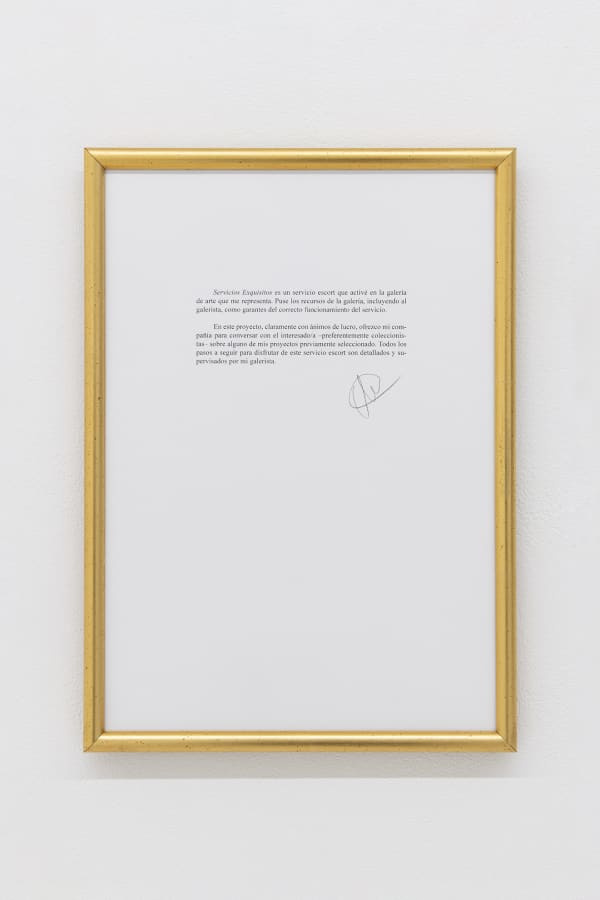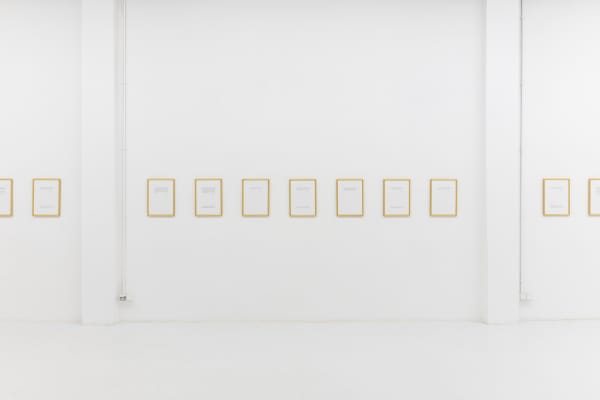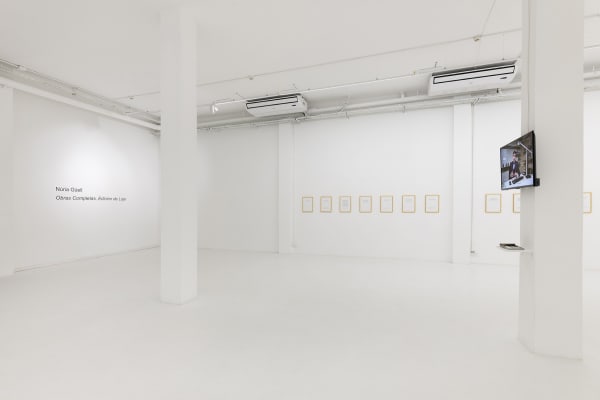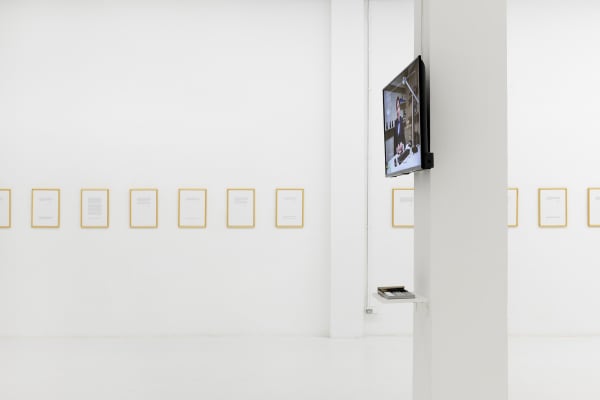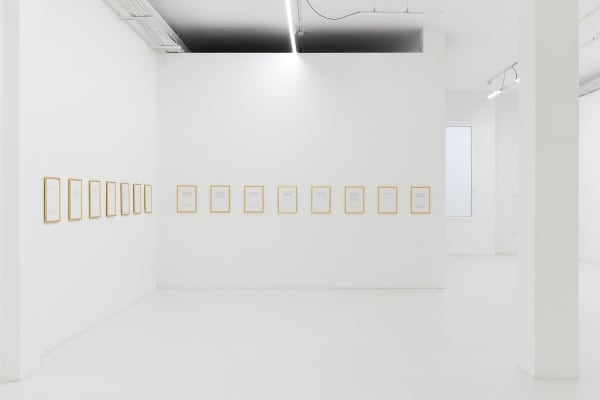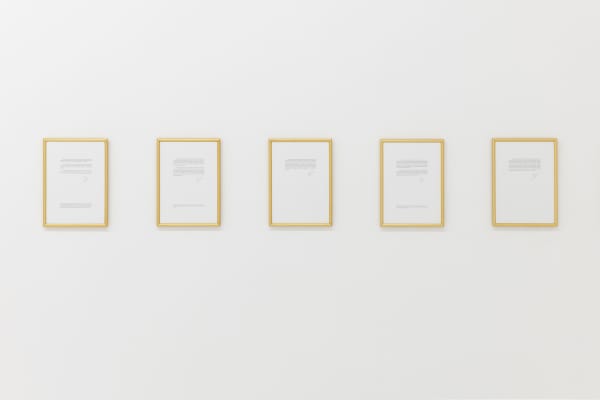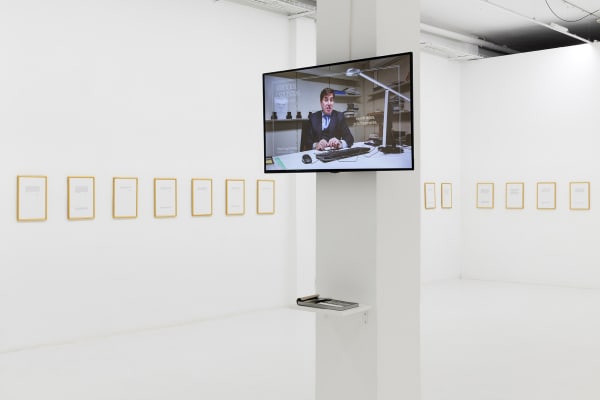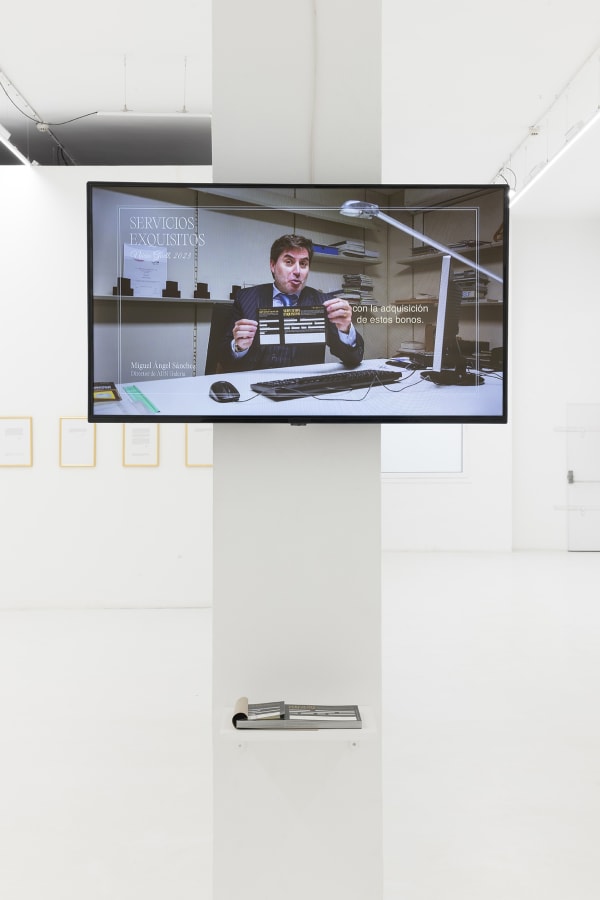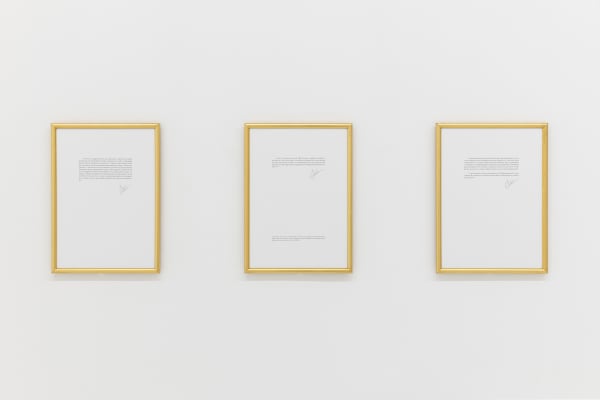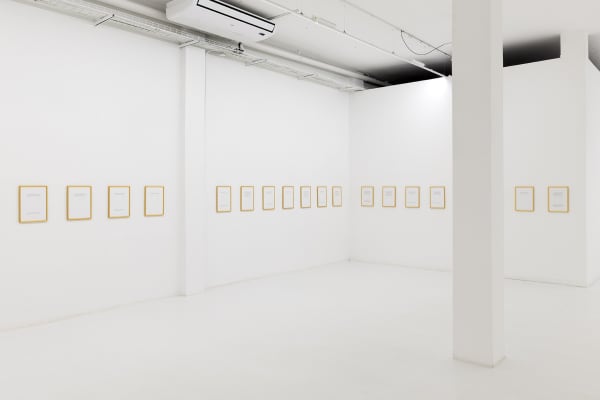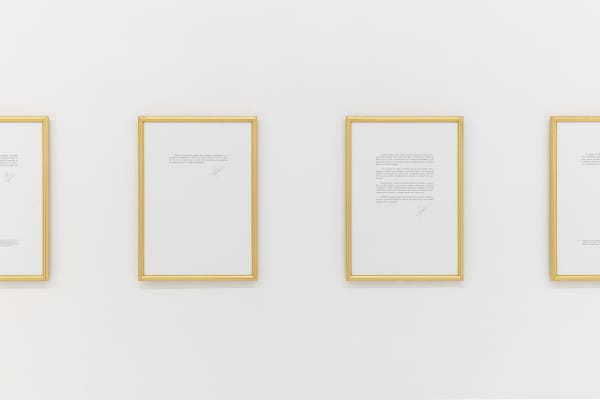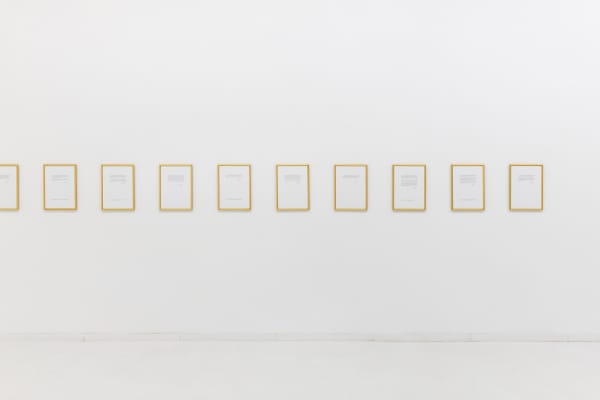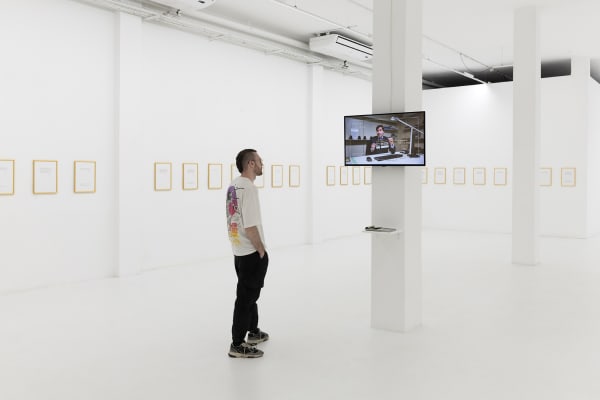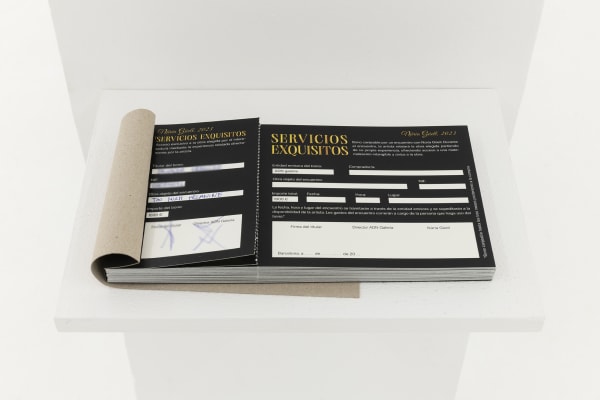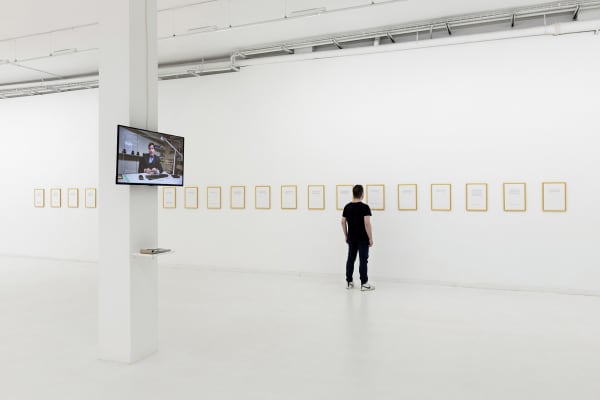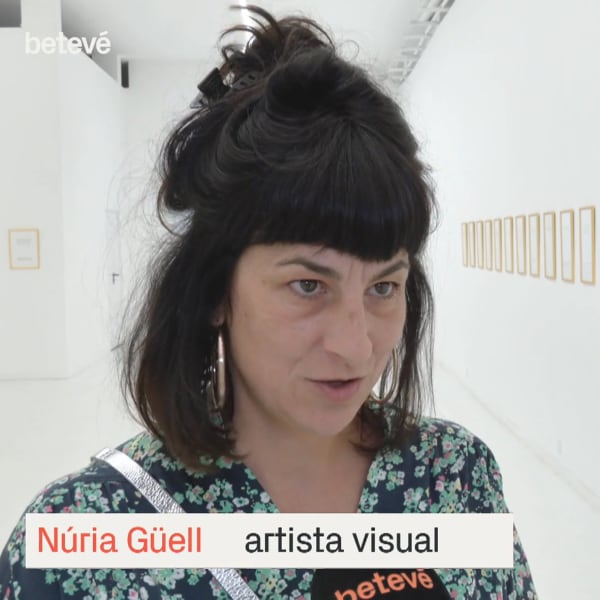Complete Works. Deluxe Edition: Núria Güell
ADN Galeria presents a new solo exhibition by Núria Güell, offering a comprehensive look at the artist's career and the presentation of two new projects created specifically for this occasion.
The opening will take place on June 3, 2023, starting at 12pm, with the presence of the artist.
Until the early 20th century, artistic practice was unequivocally defined by the medium —primarily drawing, painting, and sculpture—with codes and a history that could be preserved, developed, or transgressed. However, in 1917, when Duchamp and/or Freytag placed a urinal in an exhibition, they inaugurated a new medium that took a sovereign position over the classical mediums: the exhibition space. Anything that the artist chose to exhibit in the exhibition space could now be considered a work of art. This new medium was later formalized in the theory of the white cube, and it continues to be the dominant medium today. Or not?
The medium is not only indispensable for the artist, but the audience, in its reception, can only read the artwork through the medium; can only enter the artwork through the medium; the medium is the threshold. This may explain the success of the white cube with its feigned neutrality and sterile character that promises the material prominence of the artwork. But, can we say, after everything that has happened in the 21st century, the white cube still reigns? For instance, through which medium does the audience engage with artworks exhibited in a fair or a biennial? Does the white cube still operate in their perception? Can artistic practice exist without a medium? If the white cube has lost its hegemony, what medium are we dealing with? Is cultural industry the medium? Or is it directly the public space?
A larger cube has swallowed the white cube, and this new cube doesn't appear white, neutral, or sterile at all. This medium is none other than the art institution itself. Museums, art centers, galleries, foundations, fairs, biennials... a whole structure that restricts and promotes the development of artistic activity in each territory. This art institution, understood as a mechanism, has been the medium through which Núria Güell has worked during her 15-year career.
In the 51+1 projects that the artist has undertaken during this time, there is a constant negotiation with the institution and authority, which are challenged, confronted, or seduced by the artist. Güell reflects on this, taking into account the particularities of the specific mechanism, the stakeholders involved, and the socio-political context. She plays, stretches the boundaries, and applies a redistribution of resources to give them an unpredictable direction. The importance of this redistribution of resources, sourced from the institution, sets Núria Güell's work apart within the realm of so-called political art. It takes on various forms, such as regularization of undocumented individuals through
work contracts, establishing companies in tax havens, granting Spanish nationality through marriage to a longing Cuban, creating a ghost company as a popular monument and offering its use, allowing incarcerated individuals to work as security agents in museums, or paying the artist's social security contributions for the necessary months to receive maternity leave. While the results and consequences of these operations can be documented or testified, they do not constitute the artwork itself. The artwork cannot be represented.
The artistic institution as a mechanism is the primary medium through which Núria works, yet it is not the same to work for an institution like MACBA as it is to work for Bòlit de Girona, nor is it the same to work for a museum as it is for a gallery. These are different mechanisms that operate in different ways. The museum mechanism and the gallery mechanism, although both belonging to the realm of the artistic institution, require different approaches and actions. In this exhibition, two works are presented: Exquisite Services and 51 Statements and a Demolition, which the artist has specifically created, utilizing and reflecting upon the gallery as a medium.
With this idea as the main driving force, this exhibition aims to provide a comprehensive journey through Núria Güell's trajectory in a manner that aligns with her escapist and non-compliant nature, as an artistic practice that resists artistic conventions.
![]()



